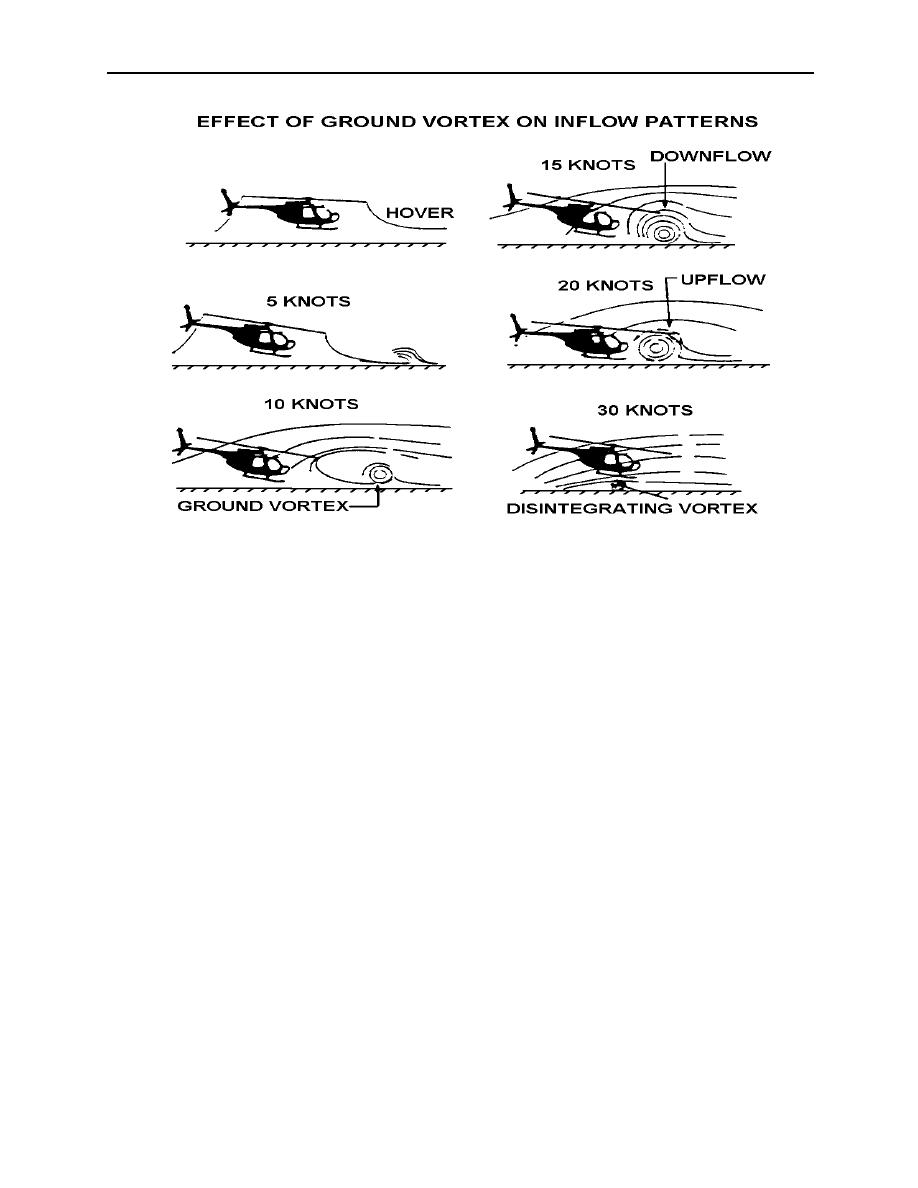 |
|||
|
|
|||
|
|
|||
| ||||||||||
|
|  CHAPTER 3
HELICOPTER AERODYNAMICS WORKBOOK
Figure 3-15
TRANSLATIONAL LIFT
About the same time ground vortex is overrun, the helicopter encounters another beneficial
aerodynamic effect called translational lift. This phenomenon occurs due to a decrease in
induced velocity. How is induced velocity reduced? Recall that during a hover we have a nearly
vertical mass airflow through the rotor disk and the continuous recirculation of our own wingtip
vortices, both of which contribute to a high induced flow (see figure 3-16). When transitioning
to forward flight the rotor outruns this continuous recirculation of old wingtip vortices and
begins to work in relatively undisturbed air. Moreover, the mass airflow through the rotors
becomes more horizontal as airspeed increases (see figure 3-17). Both effects combine to cause
a sharp decrease in induced flow, induced drag and, therefore, power required. Depending on
wind conditions, the onset of translational lift and ground vortex may or may not be noticed or
encountered during transition to forward flight.
3-14 HELICOPTER POWERED FLIGHT ANALYSIS
|
|
Privacy Statement - Press Release - Copyright Information. - Contact Us |